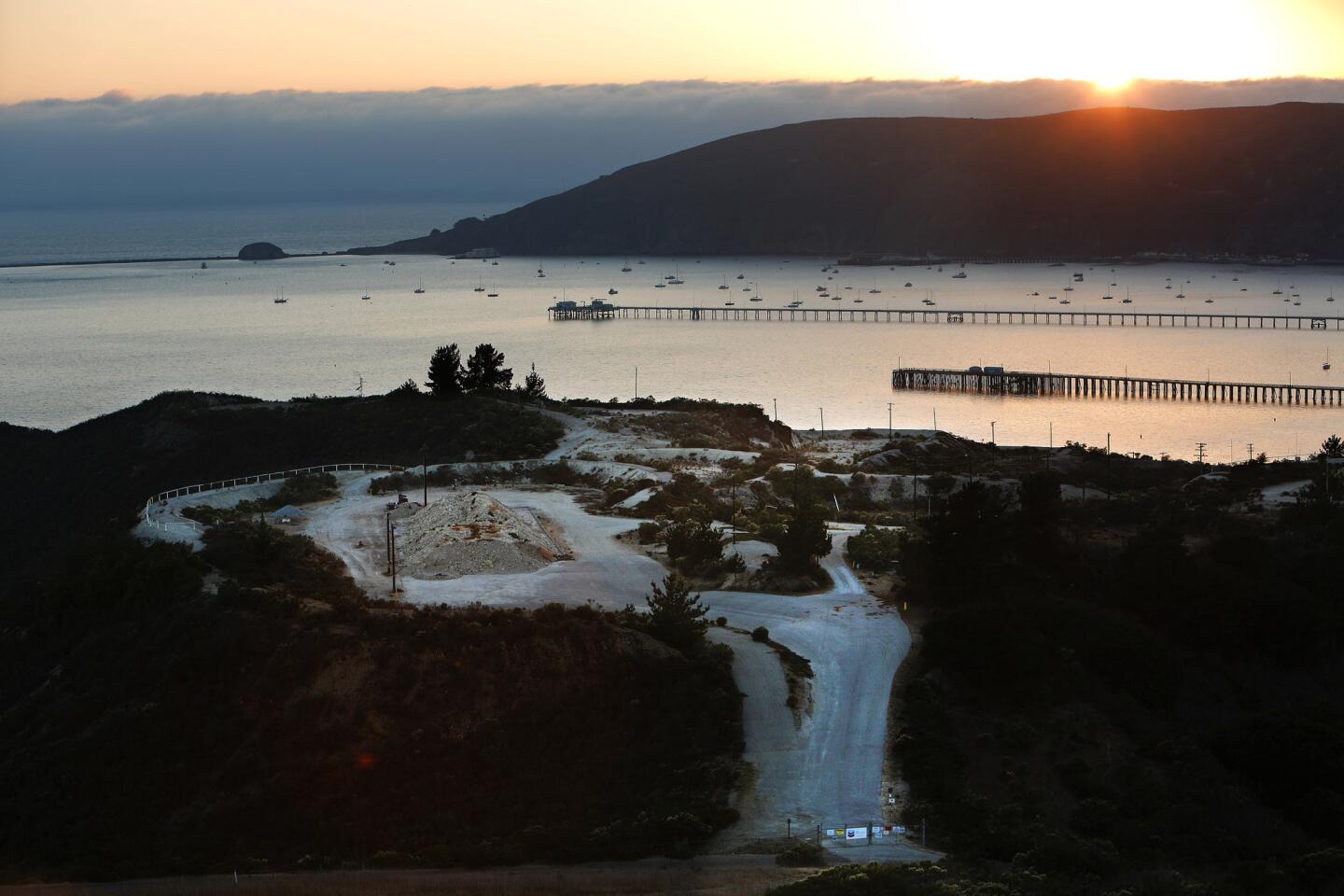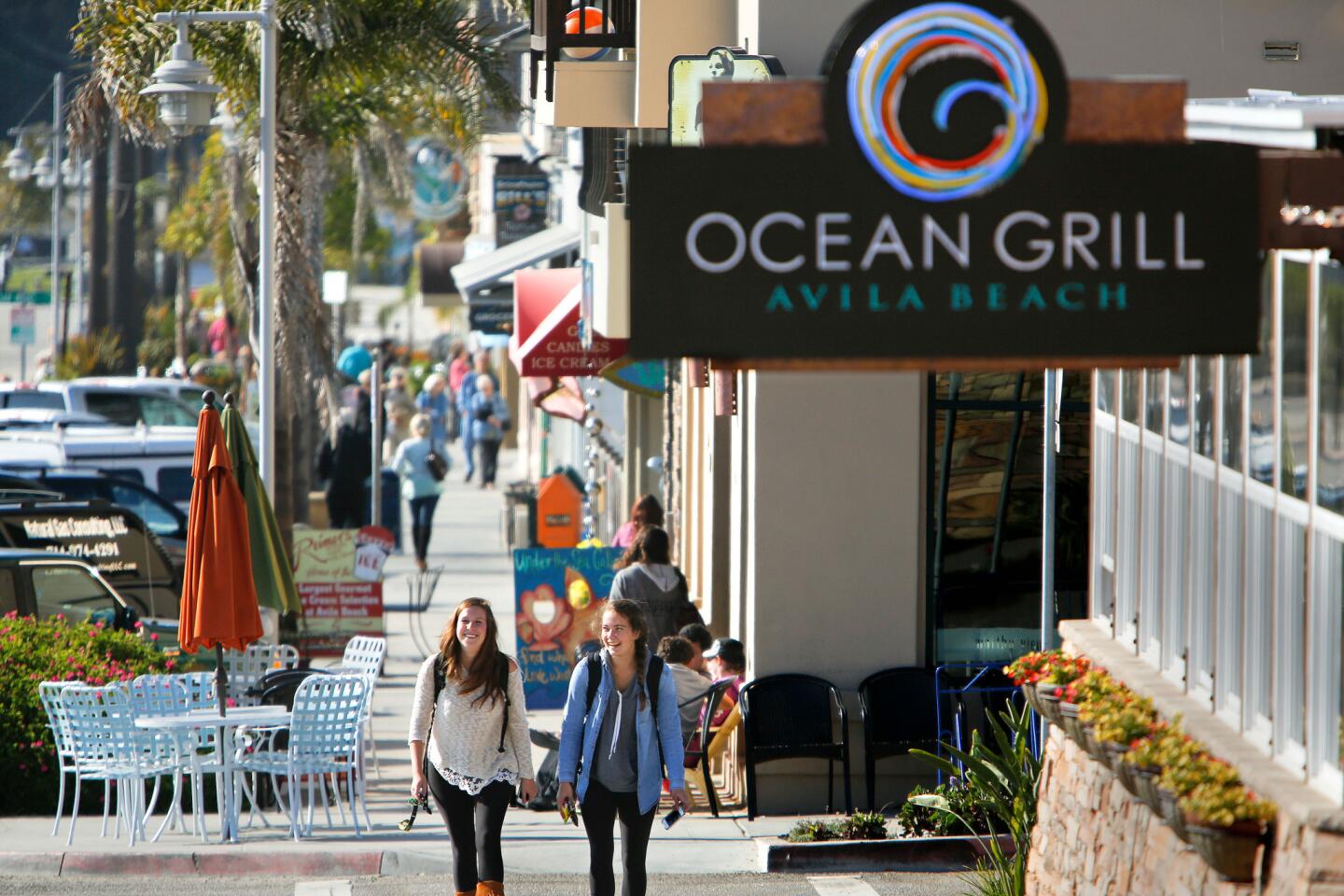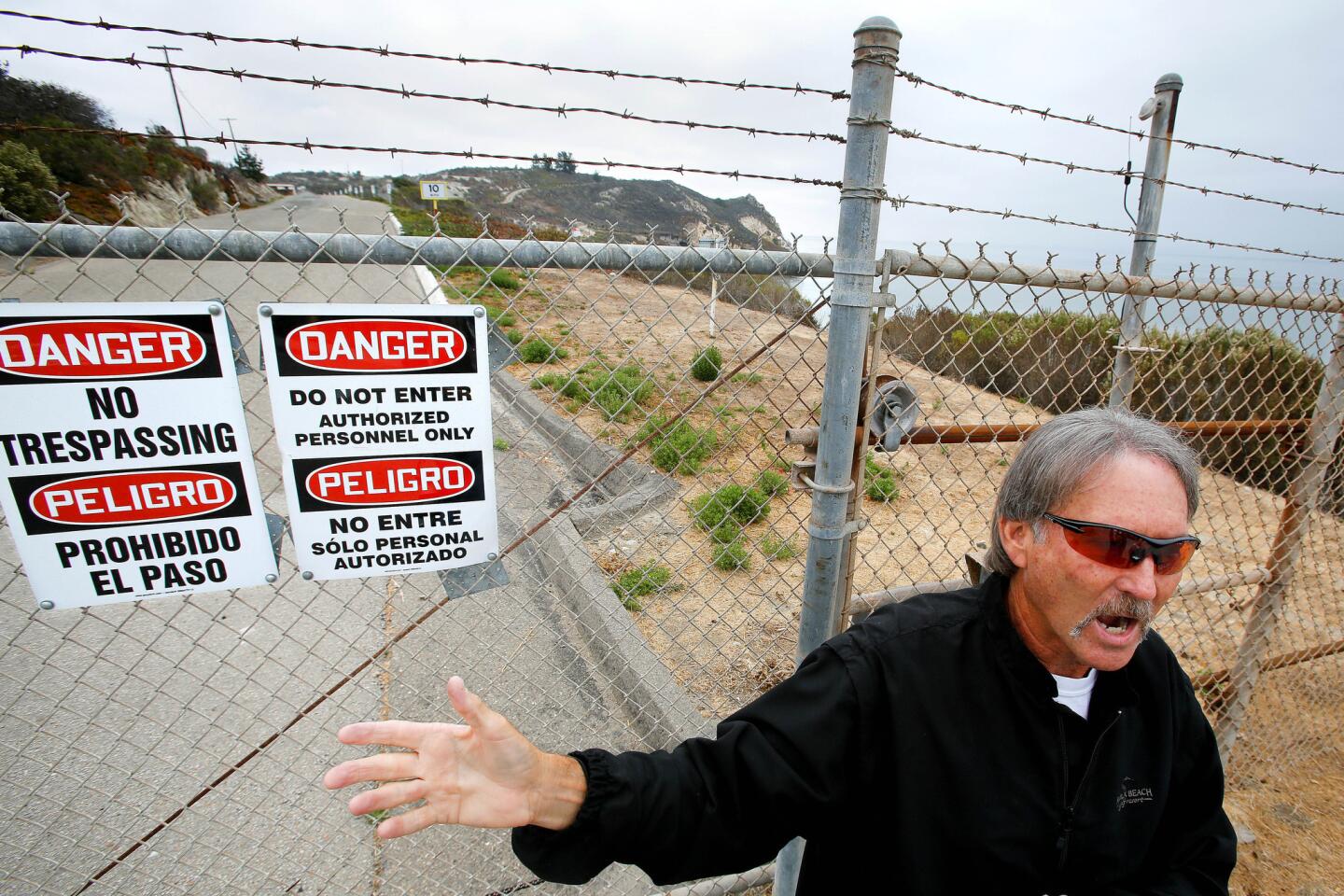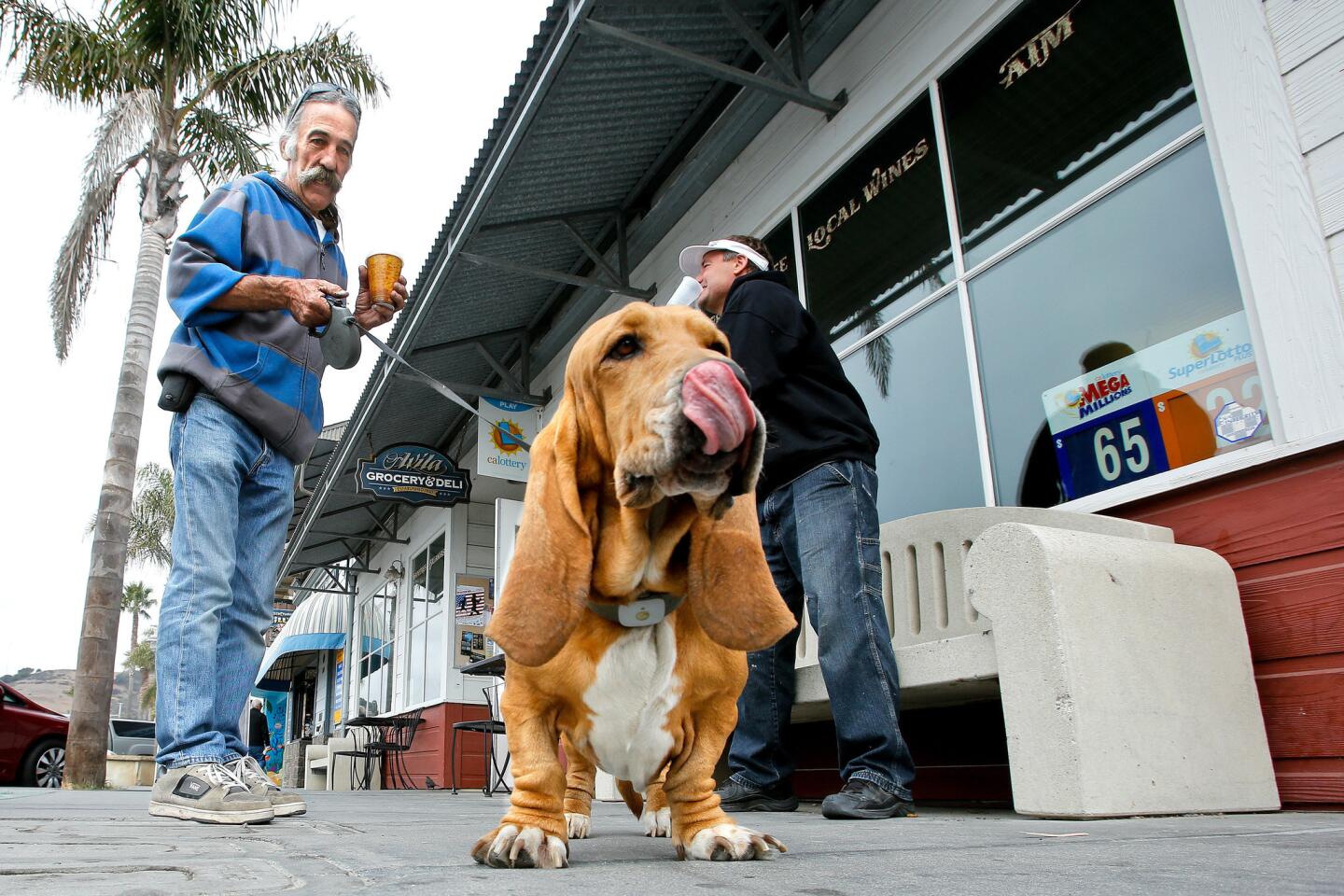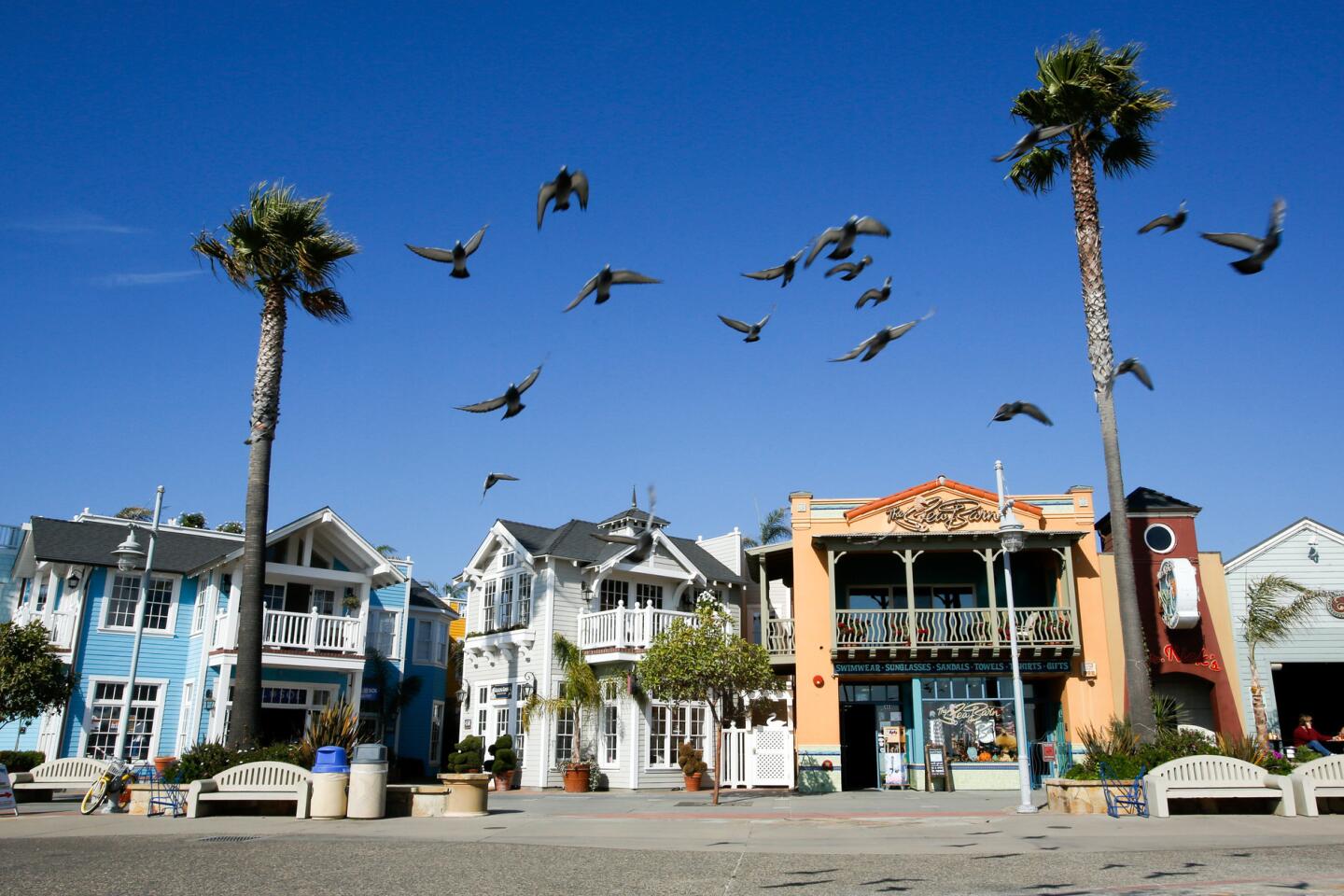In quaint Avila Beach, oil firm plans resort where crude once spilled
- Share via
AVILA BEACH, Calif. — Pretty regularly, the clouds cartwheel in from the sea and sock everybody in around here, except tiny Avila Beach. It’ll be dreary up in Morro Bay and dreadful down in Pismo, but here, the hills cut through the fog and leave a little circle of sunshine. It’s a microclimate, technically. But locals like to think of it as a halo.
Things often seem to just happen here, whether it’s a feeding frenzy of humpback whales in the bay or a nude volleyball game over at Pirate’s Cove. It had been a charmed Central Coast existence, with one disastrous exception: a massive leak from an oil tank farm that sent 400,000 gallons of petrochemicals oozing under the town.
This was not just any oil spill — it was an underground lake of muck that built up over decades, polluting Avila Beach so severely before it was discovered in 1989 that the town had to be destroyed, effectively, to be saved.
Much of Avila Beach, including its entire business district, had to be torn down and reconstructed, its iconoclastic, working-class character, many believe, lost in a thicket of bulldozers, lawyers and regulators.
Today, a final chapter to that saga is underway: An oil company wants to build a resort on the very piece of land where the spill originated.
The development is viewed by many area officials as an inevitability — even, potentially, a transformative addition, one that would mark the opening of a spectacular seaside property to the public for the first time in a century.
But among some of the salty old guard in Avila Beach, word of the resort proposal has been sobering — as if the bitterness associated with “the trauma,” as one official called it, was always just a shovelful away, like the crude oil that once permeated the dirt.
“Whoever’s got the billions and the trillions always gets the last laugh, right?” said Michael Reichman, who was born here in 1962. Reichman sipped his coffee with a friend the other morning at Avila Grocery & Deli, a Front Street pillar. “It’s a joke.”
In 1906, Union Oil Co. built the oil tank farm on 95 acres just south of San Luis Obispo. By World War II, 2 million gallons of crude oil a day was being pumped from huge storage vats into tankers in the bay. The pipes went right under Front Street.
In 1989, a man was working on his basement when he struck oil.
Diesel fuel, gasoline and crude, it turned out, had been saturating the soil under the town and its quaint beach for years. Public health advocates and the state accused Unocal of spilling toxic substances into a source of drinking water.
Unocal signed one of largest environmental settlements in California history: an agreement to cleanse Avila Beach that cost the company as much as $200 million, the equivalent of half a million dollars for each of the town’s 400 residents.
It was a terrible slog. Bulldozers removed about 300,000 cubic yards of earth, sometimes digging 15 feet deep in the heart of town to excise the last of the pollutants. Commerce ground to a halt. Many residents were displaced; some were given a check for their pain and inconvenience and never came back.
“We kind of miss the old town,” said Mike Cullen, 65, who lived and owned businesses here for more than three decades, and now visits from his home in Oahu with his dog, Buddy Blue VI. “The whole thing just got erased.”
The town was rebuilt as something different — more tourist-friendly, a little less dive bar, a little more wine and cheese. Many see it as a nicer, more welcoming place.
“It was, quite frankly, an eyesore,” said Rick Cohen, executive director of the Avila Beach Community Foundation. The agency dispenses at least $60,000 each year in community-building grants financed, still, through the Unocal settlement. “Now it’s beautiful.”
“But there is an acceptance that it is a different kind of town,” said San Luis Obispo County Supervisor Adam Hill, whose district includes Avila Beach. “You can’t reconstruct funky.”
Chevron Corp. bought Unocal in 2005, acquiring both the legacy of the oil tank farm and the majesty of the bluff, which is now wiped clean of the massive storage containers.
Talk of redevelopment has been percolating for years, but it is suddenly getting serious; Chevron was recently granted permission from the county to take the first substantive step, changing the zoning of the land.
Many people in town want the fenced-off property essentially opened up but undeveloped — a notion summarized nicely by Reichman, who said he’d like to see “a bitchin’ park for the people, for the public.”
Chevron, officials said, is well aware of the sensitivity of its new mission.
Its early plans call for an “intimate resort retreat,” including a 100-room hotel and 95 cottages, along with a spa, restaurants and a seaside amphitheater. But they call, too, for 60% of the property to be set aside for open space and natural habitat — for scenic overlooks, a coastal trail. Chevron has pledged low-slung construction, no more than two stories, to avoid disrupting the coastal vista.
“We are committed to restoring the Avila Point property to be a healthy and safe place for future generations,” the company said in a statement. Chevron declined to discuss the proposal in detail.
Chevron could benefit, too, from the passage of time. Many of the old guard who were displaced with the reconstruction of the town have passed away or moved on, Cohen said.
“With that goes the memories and the hard feelings,” Cohen said. “The only thing that is constant is change.”
At the same time, Cohen said, there remains enough fierce protectionism of the town to block any sort of development that would be out of character with this stretch of the California coast — “enough noise among locals to discourage anything that would be out of line,” he said.
“There is enough resistance,” he said. “And what we’ve seen so far looks pretty good. It’s going to be a crown jewel when it’s all done.”
Chevron expects to conduct environmental assessments throughout 2014, hold public hearings and pursue county and state governmental approval in 2015 and 2016, and then choose a developer in 2017.
“I don’t have any issue with private development scenarios as long as we get as much public benefit as possible,” said Hill, the county supervisor. “I don’t want to see window dressing. I want to see major windows.”
Locals, stung once in a way that brought a little beach town to its knees, will be watching carefully throughout, Hill said.
“They’ve gone through stuff that most people don’t go through,” Hill said. “Their concerns are valid, and they are not easily mollified. This is a big deal, and there are a lot of people paying attention. There is no way you could just slip anything in here.”
More to Read
Sign up for Essential California
The most important California stories and recommendations in your inbox every morning.
You may occasionally receive promotional content from the Los Angeles Times.
